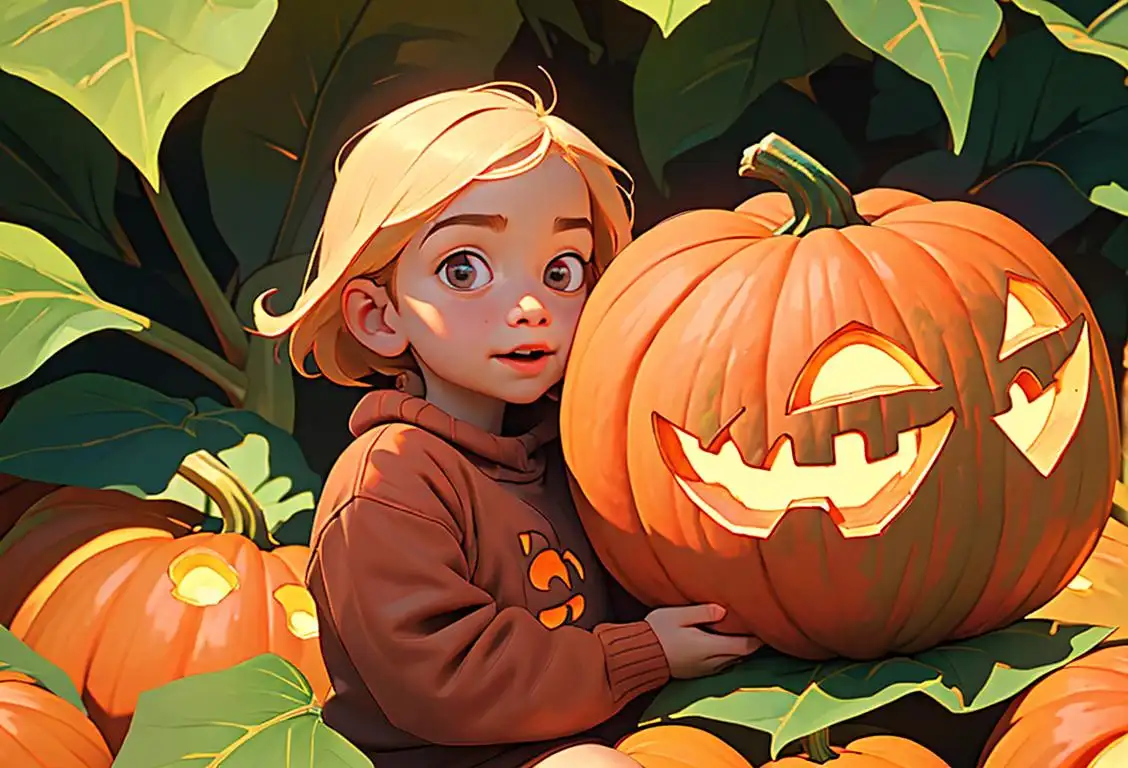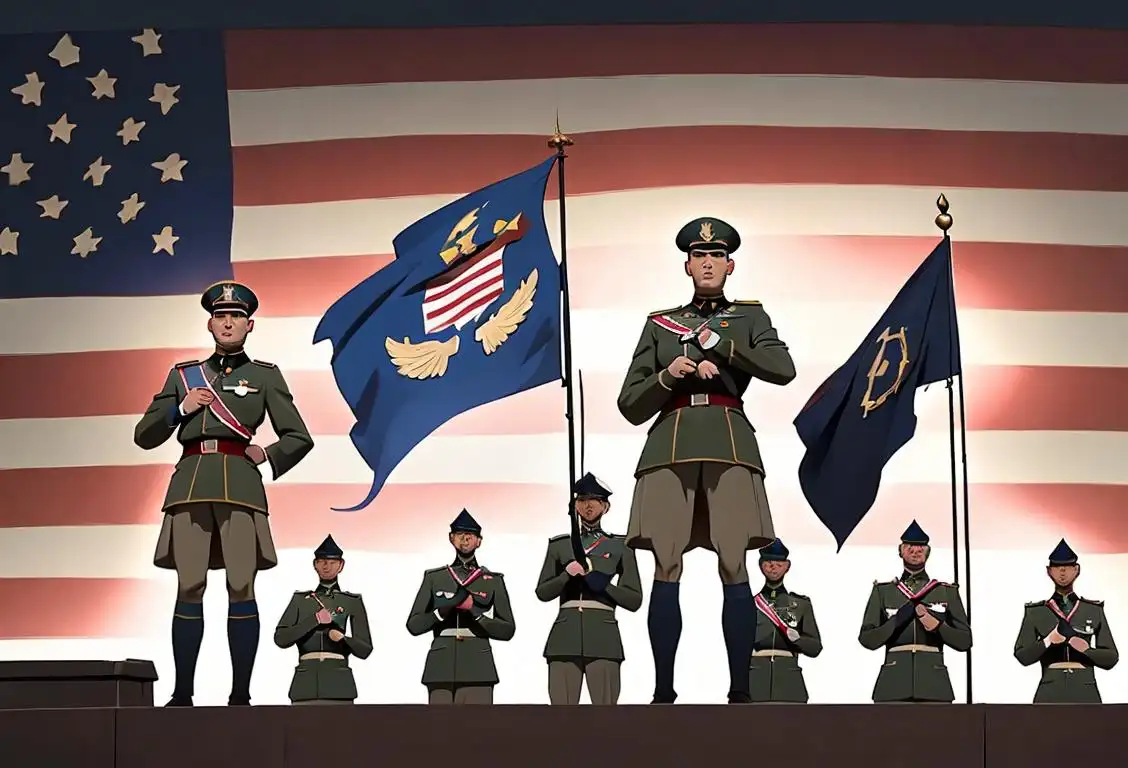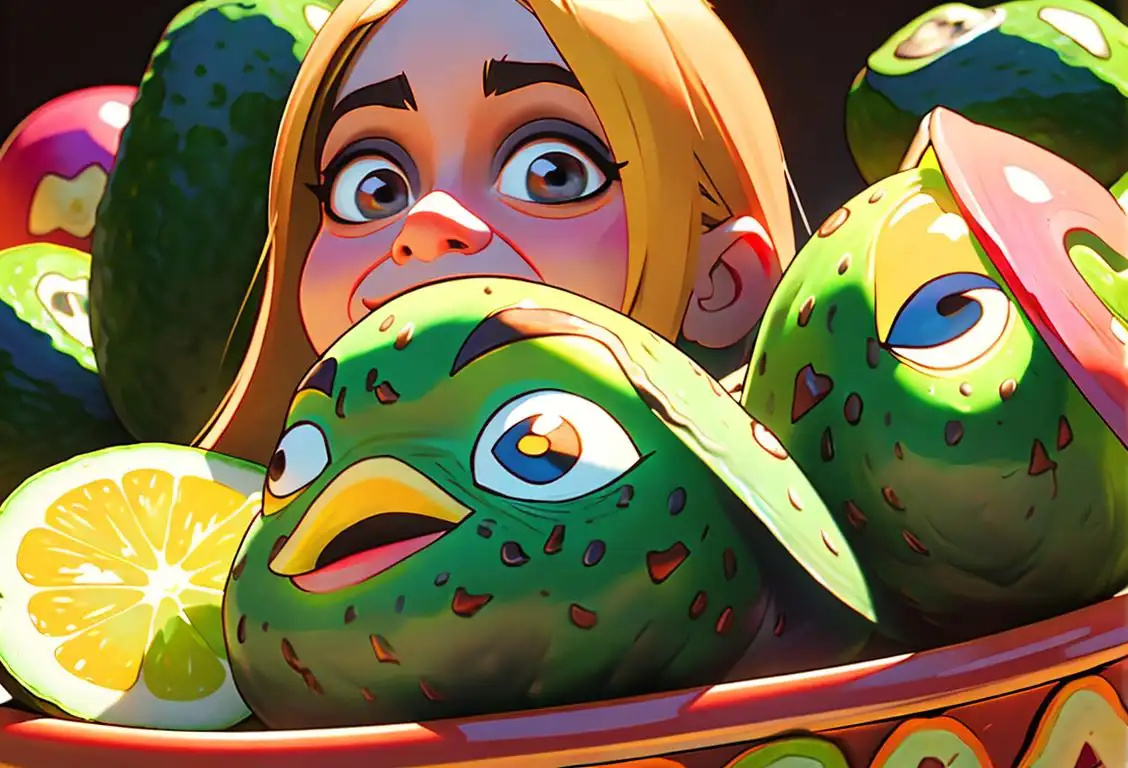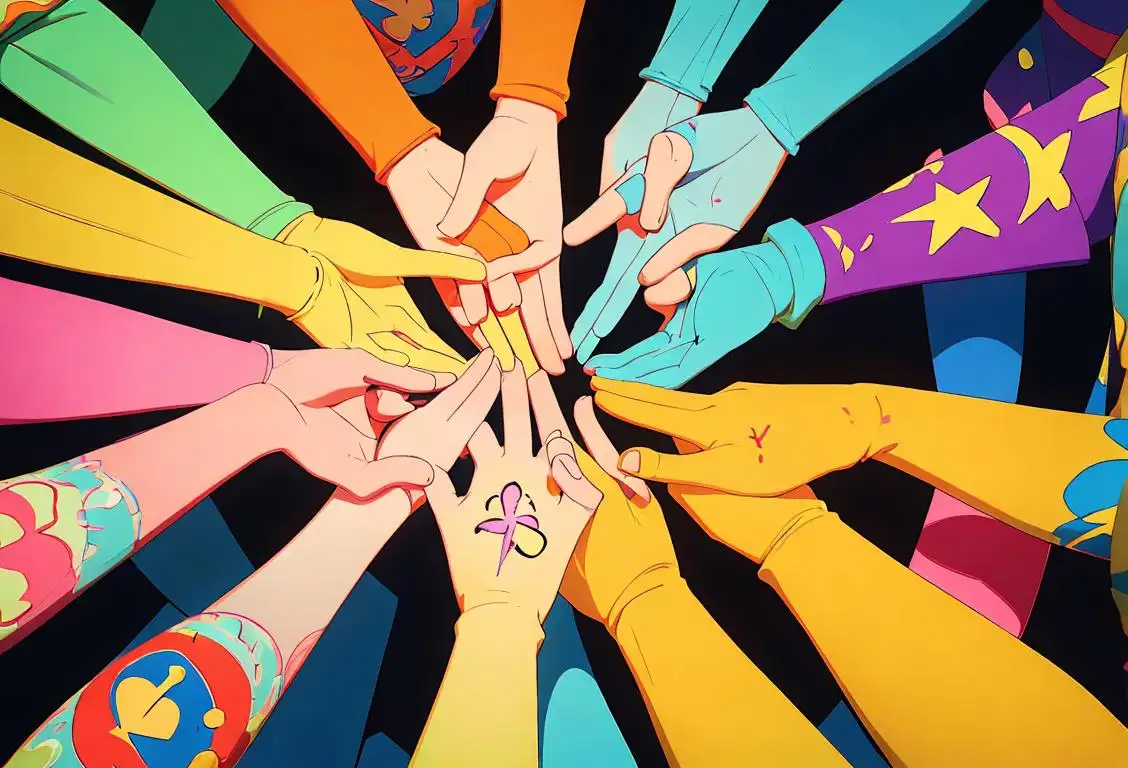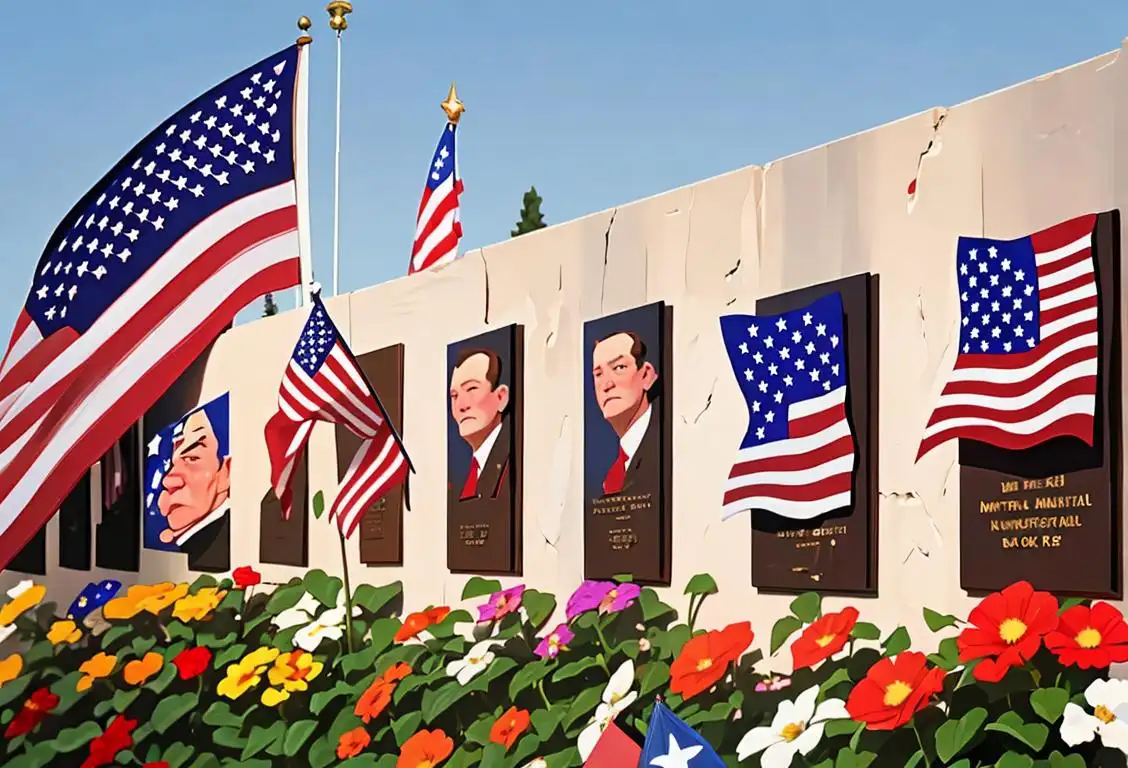National Elf Day

Happy National Elf Day! Get ready to unleash your inner elf and spread some holiday cheer. This whimsical national day celebrates those mischievous little creatures with pointy ears and a love for all things merry and bright. So grab your tinsel, put on your jingle bells, and let's dive into the enchanting world of elves!
When is Elf Day?
It's national elf day on the 6th December.
The Origin of National Elf Day
While the exact origin of National Elf Day remains a mystery, it's no secret that elves have been a part of folklore and mythology for centuries. From Santa's trusty helpers to mischievous shoemakers, elves have captivated our imaginations and filled our hearts with the joy of the holiday season.
In the digital age, National Elf Day has taken on a whole new meaning. It has become a social media sensation, with people of all ages donning their pointy hats, green attire, and elf ears to spread holiday cheer. Whether it's sharing elf-inspired selfies or organizing charity events, National Elf Day has become a day to celebrate kindness, community, and all things elf-tastic!
How to Celebrate National Elf Day
Looking to embrace your inner elf and join in the festivities? Here are some fun ideas to make your National Elf Day memorable:
- Dress up as an elf: Channel your inner Buddy from the movie 'Elf' and dress up as a jolly and mischievous elf. Don't forget the iconic pointy hat and curly-toed shoes!
- Spread some cheer: Elves are known for their joyful spirit, so why not brighten someone's day? Write kind messages, leave little surprises, or perform random acts of kindness to make others smile.
- Organize an elf-themed event: Gather your loved ones and organize an elf-themed gathering. From elf costume contests to elf-inspired games and crafts, the possibilities are endless.
Did You Know?
Fun Fact: Elves have been a staple of folklore in various cultures around the world. In Scandinavian folklore, elves are believed to be small, magical beings with a mischievous nature. However, modern depictions of elves often showcase them as Santa's trusty helpers, spreading joy and delivering gifts to children during the holiday season.
History behind the term 'Elf'
Old English
Origin of the term 'elf'
The term 'elf' originated in Old English, around the 9th century. It is derived from the Old Norse word 'alfr' and the Proto-Germanic word 'albaz', which both referred to a supernatural being with magical powers. In Old English, 'elf' was used to describe a class of mythical beings that were believed to have a close connection to nature and possessed great beauty and wisdom.
800s AD
Origins in Norse Mythology
The term 'elf' finds its roots in Norse mythology. In Norse folklore, elves were seen as supernatural beings who had the power to infuse magic into the natural world. These elves were often portrayed as beautiful, immortal creatures with great wisdom and skill in arts and crafts.
Old English period (449-1066)
Origin in Old English mythology
The term 'elf' traces its roots back to the Old English period where it originated in the mythology of the Anglo-Saxon people. In Old English, an 'elf' or 'ælf' referred to a supernatural being or spirit, often associated with forests, rivers, and mountains. These elves were believed to possess magical powers and were generally seen as benevolent creatures.
Old English Period (450-1100)
Origins of the Word
The term 'elf' finds its roots in Old English, where it was called 'ælf.' Derived from ancient Germanic folklore and mythology, the word referred to a supernatural being who played a significant role in the beliefs of early European cultures. These creatures were often depicted as mischievous, yet generally benevolent spirits that were closely connected to nature.
Old English period (400-1100)
Origins in Old English
The term 'elf' can be traced back to Old English, where it is derived from the word 'ælf'. In Old English mythology and folklore, ælves were supernatural beings who possessed beautiful and youthful appearances. They were often depicted as mischievous creatures who could bring both good fortune and bad luck to humans.
12th century
Old English Origins
The term 'elf' originated in Old English as 'ælf' or 'ylfe'. In Old English mythology, elves were supernatural beings with magical powers who dwelled in forests and hills. They were often depicted as mischievous and capricious creatures.
Old English Period (circa 450-1100)
Origins in Old English
The term 'elf' has its origins in Old English, where it was spelled as 'ælf'. In Old English mythology, elves were believed to be supernatural beings with magical powers. They were often portrayed as mischievous or benevolent creatures that inhabited forests, meadows, and other natural landscapes. The concept of elves in Old English literature is deeply rooted in Germanic folklore, which greatly influenced the culture of the time.
Old English Period (5th-11th century)
Origins in Old English
The term 'elf' can be traced back to Old English, where it was spelled 'ælf' or 'elf'. The exact origin of the word remains uncertain, but it is believed to have been derived from ancient Germanic mythology. In Old English, 'elf' referred to a supernatural being or spirit, often associated with nature or forests. These elves were generally seen as mischievous or even malevolent creatures, capable of bringing both good fortune and harm.
8th century
Origin of the Old English term 'ælf'
In the 8th century, the term 'ælf' first appeared in Old English, describing a supernatural being or spirit. These spirits were often associated with beauty, immortality, and magical powers. Elves were a common feature in English folklore and mythology, with various beliefs and legends surrounding their existence.
Old English period (450-1100)
Origin of the word 'elf'
The term 'elf' originated from Old English, derived from the word 'ælf' meaning 'white being' or 'night spirit' in Old Norse. In early Germanic folklore, elves were depicted as supernatural beings with magical powers, residing in forests and hills. They were often associated with beauty, grace, and mischief.
13th century
Christian Influences
During the Middle Ages, Christianity began to influence the concept of elves. They were now portrayed as either angelic or demonic beings. In Christian folklore, elves were sometimes associated with fallen angels or demons.
Middle English Period (circa 1100-1500)
Evolution to 'elf'
During the Middle English period, the term 'ælf' gradually evolved into 'elf' due to linguistic changes. The term continued to be associated with magical beings and supernatural creatures in literature and folklore. Some of the famous works during this period, such as Geoffrey Chaucer's 'The Canterbury Tales,' mentioned elves as mythical creatures that possessed mystical qualities.
Folklore and Mythology
Elves in folklore and mythology
Throughout history, elves have been prominent figures in various folklore and mythology traditions. In Norse mythology, elves were considered to be divine beings associated with fertility and protection. They were often depicted as taller and more beautiful than humans, with a strong affinity for nature. In Celtic folklore, elves were known as fairies and were associated with magical powers and mischief.
Norse mythology influences (800-1100)
Expansion through Norse mythology
During the Viking Age, Norse mythology heavily influenced the concept of elves. The Old Norse word for elf, 'álfar,' became a prominent term in Norse mythology. Elves in Norse mythology were depicted as ethereal and beautiful beings possessing great wisdom and mystical abilities. They were associated with the Norse god Freyr, the ruler of Alfheim, the realm of the elves.
Medieval period (1100-1450)
Elves in Norse mythology
During the medieval period, Norse mythology played a significant role in shaping the concept of elves. These creatures were believed to be closely connected to the gods and inhabited Álfheimr, the realm of the elves. Norse elves were often depicted as immortals with ethereal beauty and great wisdom. They were usually benevolent beings but could also be mischievous.
Medieval Times
Elves in Norse Mythology
During the medieval times, elves became a significant part of Norse mythology. Norse legends referred to elves as 'álfar' or 'álfheimr,' meaning 'elves' and 'elfland' respectively. According to these tales, elves were divine beings with great wisdom, skilled in magic, and guardians of nature. They were known to live in beautiful forests and were associated with fertility and protection.
Norse Mythology (9th-13th century)
Elves in Norse Mythology
During the Viking Age, Norse mythology played a significant role in shaping the concept of elves. In Norse mythology, elves were known as 'álfar' or 'álfarinn' and were considered divine beings associated with light and beauty. Unlike the mischievous elves of Old English folklore, Norse elves were depicted as ethereal and ethically superior. They resided in the realm of Álfheimr and were often portrayed as protectors of nature and mediators between humans and the gods.
Norse mythology (8th-11th century)
Influence of Norse mythology
During the Viking Age, Norse mythology heavily influenced the concept of elves. In Norse folklore, elves were portrayed as powerful and magical beings who resided in hidden realms, such as Alfheim. They were associated with nature, wisdom, and craftsmanship. Elves in Norse mythology had a closer connection with nature than their counterparts in other mythologies.
Medieval Period (5th-15th century)
Elves in Norse Mythology
During the medieval period, elves continued to be prominent in Norse mythology. In Norse folklore, elves were known as 'álfar' and were associated with forests, nature, and fertility. They were considered to be beautiful, long-lived, and possessed magical abilities. Elves played various roles, from helpful guardians to dangerous tricksters.
1200s AD
Medieval European Folklore
The concept of elves evolved in medieval European folklore, where they became known as mischievous and sometimes malevolent creatures. These elves were believed to be small in size, dressed in green, and often associated with the forests. They were thought to play tricks on humans and were known to bring good or bad fortune depending on their mood.
Medieval folklore and fantasy (12th-14th centuries)
Emergence in Medieval folklore and fantasy literature
In the Medieval period, the idea of elves continued to evolve and gain popularity in folklore and fantasy literature. Elves became a common theme in medieval folklore, known for their agility, archery skills, and penchant for mischief. Their depiction varied across different cultures, from tiny creatures to tall, noble beings. Notable examples include the skilled elvish archers seen in the 'Matter of France' tales and the wood elves of Germanic folklore.
Middle English (11th-15th century)
Evolution of the Term in Middle English
During the Middle English period, the term 'elf' underwent various changes. It was often used interchangeably with 'fairy' or 'faerie,' which referred to supernatural entities possessing magical powers. This conflation of elves and fairies emerged due to the influence of French and Celtic folklore. In Middle English literature, elves were portrayed as enchanting beings associated with enchantments and enchanting realms.
Shakespearean Era
Elves in literature
During the Shakespearean era in the late 16th and early 17th centuries, elves gained popularity in literature. William Shakespeare featured elves prominently in his plays, such as 'A Midsummer Night's Dream', where they were portrayed as mischievous and playful creatures. These literary depictions of elves further enhanced their cultural significance and spread their popularity among the masses.
Victorian era (1837-1901)
Elves in folklore and literature
The term 'elf' gained popularity during the Victorian era, thanks to the revival of folklore and interest in mystical tales. Authors such as Hans Christian Andersen and the Brothers Grimm incorporated elves into their fairy tales, broadening their presence in literature. Elves were often portrayed as diminutive, helpful, and magical creatures, playing a vital role in enchanting narratives.
1800s AD
Evolution into Gentle and Helpful Beings
In the 19th century, the perception of elves transformed once again, this time into gentle and helpful beings. This shift can be attributed to the influence of folklore, particularly in Germanic cultures. Elves became associated with Christmas and were depicted as Santa Claus's helpers, industriously making toys for children.
Medieval literature (11th-15th century)
Elves in Medieval literature
Elves gained further popularity through Medieval literature, particularly in works like 'Sir Orfeo' and 'Sir Gawain and the Green Knight'. In these tales, elves were depicted as enchanting and mystical creatures. They often played roles as guides, tricksters, or companions to legendary heroes. The portrayal of elves in literature helped cement their place in European folklore and fantasy.
19th century
Elves in Folklore and Fairy Tales
In the 19th century, elves gained widespread popularity through folklore and fairy tales. They were often depicted as tiny, mischievous creatures with pointed ears and a penchant for playing tricks on humans. Famous literary works like 'The Elves and the Shoemaker' and 'A Midsummer Night's Dream' portrayed elves as magical beings, linking them to enchantment and whimsy.
Scandinavian Influence (12th-14th centuries)
Elves in Norse Mythology
Elves also played a significant role in Norse mythology, known as 'Alfars' or 'Alfarinn.' According to Norse folklore, elves were often depicted as beautiful and ethereal beings who lived in forests and possessed extraordinary wisdom and magical abilities. The influence of Norse mythology further popularized the concept of elves in various European cultures, including England.
16th century
Shakespeare's Influence
In the late 16th century, William Shakespeare's play 'A Midsummer Night's Dream' popularized the image of elves as small, delicate, and playful creatures. This depiction of elves as diminutive beings with magical abilities became widely known and influenced subsequent literature and art.
Fairy Folklore (16th-19th century)
Elves as Fairy-like Creatures
In the 16th to 19th centuries, the concept of elves became intertwined with fairy folklore. Elves were often depicted as smaller, ethereal creatures associated with magic and enchantment. They played roles in folklore, legends, and fairy tales, appearing as both benevolent and malevolent beings. These stories popularized the image of elves as small, pointy-eared creatures with magical abilities and a penchant for tinkering.
1920s AD
Modern Popularity through Literature
The term 'elf' gained significant popularity in the 1920s through the works of J.R.R. Tolkien. His epic fantasy novels, particularly 'The Hobbit' and 'The Lord of the Rings,' introduced a rich elven mythology to a wider audience. Tolkien's elves were portrayed as noble, graceful, and wise beings, deeply connected to nature and possessing great skills in archery and craftsmanship.
Nordic and Germanic Folklore Revival
Romanticizing elves
In the 19th century, there was a revival of interest in Nordic and Germanic folklore. This revival fuelled a renewed fascination with elves and other mythical creatures. Romantic writers and poets often portrayed elves as ethereal and mystical beings, emphasizing their beauty, grace, and connection to nature. This romanticized view of elves solidified their image as enchanting and magical creatures in popular culture.
Literary Popularity (19th-20th century)
Elves in Literature
The 19th and 20th centuries witnessed a surge in literary works featuring elves. Writers like J.R.R. Tolkien incorporated elves as key characters in their fantasy universes. Tolkien's elves were noble, wise, and skilled in arts, making them beloved figures in his works, such as 'The Hobbit' and 'The Lord of the Rings.' Through these iconic novels, elves gained immense popularity and became influential archetypes in the fantasy genre.
20th century
Elves in Fantasy Literature
The 20th century witnessed elves transitioning from folklore to fantasy literature. Influential authors like J.R.R. Tolkien brought elves into mainstream imagination through works like 'The Hobbit' and 'The Lord of the Rings.' Tolkien's depiction of elves as elegant, long-lived, and highly skilled warriors shaped the modern perception of elves in popular culture. Elves became synonymous with noble and wise beings, often associated with forests and nature.
J.R.R. Tolkien's influence (20th century)
Elves in modern fantasy thanks to J.R.R. Tolkien
One of the greatest influences on the modern concept of elves is J.R.R. Tolkien, renowned for his Middle-earth legendarium. Tolkien's elves are characterized by their ethereal beauty, immortal nature, and profound connection with nature. His works, such as 'The Hobbit' and 'The Lord of the Rings,' popularized elves in contemporary fantasy literature, cementing their image as noble, wise, and elegant beings.
20th century
Elves in popular culture
With the rise of fantasy literature and later, film and television, elves became iconic figures in popular culture. J.R.R. Tolkien's Middle-earth series, including 'The Lord of the Rings,' brought elves into the forefront of fantasy storytelling. Tolkien's elves were known for their exceptional beauty, immortal existence, and superior abilities in archery and swordsmanship. This portrayal heavily influenced subsequent representations of elves in various media forms.
J.R.R. Tolkien's Works (20th century)
Modern-day Elves in Fantasy Literature
The 20th century brought a resurgence of interest in elves, thanks in large part to the works of J.R.R. Tolkien. In Tolkien's legendarium, which includes 'The Hobbit' and 'The Lord of the Rings,' elves are depicted as an ancient and noble race with unparalleled elegance and wisdom. Tolkien's portrayal of elves greatly influenced modern fantasy literature and popularized the image of elves as tall, fair, and long-lived beings with unparalleled grace and magical abilities.
19th century
Nordic Mythology
In the 19th century, a revival of interest in Norse mythology led to the reinterpretation of elves. Nordic mythology portrayed elves as a separate race of beautiful, long-lived beings associated with nature, magic, and wisdom. This view of elves as noble and graceful creatures gained popularity in literature and art.
Iconic Christmas elves (19th century)
Rise of Christmas elves
In the 19th century, the modern image of elves as Santa Claus's helpers emerged. With the publication of Clement Clarke Moore's poem 'A Visit from St. Nicholas' (commonly known as 'The Night Before Christmas'), Santa's elves became popular figures associated with Christmas. These elves, depicted as industrious and playful toymakers, influenced the contemporary perception of elves as cheerful, diminutive creatures with pointed ears.
Fairy Tales and Folklore (17th-19th centuries)
Elves in Fairy Tales and Folklore
During the 17th to the 19th centuries, elves became prominent characters in fairy tales, folklore, and literature. Authors like Hans Christian Andersen and the Brothers Grimm featured elves in their stories, portraying them as small, charming creatures with supernatural powers. These depictions often associated elves with forests, magic, and enchantment, capturing the imagination of readers across generations.
20th century
Pop Culture Phenomenon
Elves have remained a prominent part of popular culture in the 20th century and beyond. From J.R.R. Tolkien's 'The Lord of the Rings' to modern fantasy role-playing games, elves are often portrayed as tall, agile, and wise beings with a deep connection to nature. They continue to capture the imagination of people worldwide.
1979
Dungeons & Dragons Popularizes Elves
In 1979, the popular role-playing game 'Dungeons & Dragons' further popularized the concept of elves. D&D featured elves as one of its core playable races, allowing players to immerse themselves in elven characters with their unique abilities and characteristics. This game's immense success influenced subsequent fantasy literature, video games, and other media, cementing elves' place as an essential part of the fantasy genre.
2000s AD
Elves in Popular Culture
In the 21st century, elves continue to captivate popular culture through various mediums, including books, movies, and video games. They often appear as agile and magically gifted creatures with pointed ears, residing in enchanted realms. The portrayal of elves as skilled archers and guardians of nature has become a recurring theme.
Modern Pop Culture and Fantasy (20th century onwards)
Elves in Modern Media
In the modern era, elves continued to grow in popularity through various forms of media. In fantasy literature, J.R.R. Tolkien's 'The Lord of the Rings' introduced a highly influential portrayal of elves, depicting them as noble, graceful, and ageless beings with immense magical prowess. This portrayal greatly influenced subsequent works of fantasy, including movies, video games, and role-playing games, where elves are often depicted as wise and elegant creatures with extraordinary abilities.
Elves in popular culture (20th century)
Elves in fantasy genre
The 20th century witnessed a surge in fantasy literature and media that depicted elves. Influential authors like J.R.R. Tolkien and Terry Pratchett created rich elfin worlds in their novels, such as 'The Lord of the Rings' and the 'Discworld' series. Elves transformed into iconic characters, often portrayed as wise, graceful, and skilled archers. This portrayal sparked immense interest in elfin lore and contributed to their enduring presence in popular culture.
Fantasy Literature and Pop Culture
Elves in fantasy genre
In the 20th century, elves became a prominent element of the fantasy genre. Influential authors like J.R.R. Tolkien introduced elves as noble and wise beings in his renowned works such as 'The Lord of the Rings.' This portrayal popularized the idea of elves as skilled archers, graceful warriors, and guardians of ancient wisdom. Elves in fantasy literature and later in popular culture, including movies and video games, have since been iconic and have contributed to their lasting appeal.
Modern Pop Culture
Elves in Pop Culture
Elves have remained a staple in modern pop culture, thanks to their enduring appeal. From Santa's elves, who help make toys, to various portrayals in films, TV shows, and video games, these mythical creatures continue to captivate audiences worldwide. Their depiction often combines elements from folklore, literature, and contemporary interpretations, showcasing a diverse range of appearances and characteristics.
Present Day
Elves in Modern Pop Culture
Today, the term 'elf' is widely recognized, thanks to its integral role in modern pop culture. Elves appear in books, movies, TV shows, and video games, continuing to captivate audiences with their magical attributes. They are often portrayed as graceful, skilled archers, nature enthusiasts, Santa's helpers, or even mischievous creatures. The term 'elf' has become synonymous with fantasy, enchantment, and wonder in the present day.
Did you know?
Elves have been a staple of folklore in various cultures around the world. In Scandinavian folklore, elves are believed to be small, magical beings with a mischievous nature.Tagged
awareness fun loved onesFirst identified
8th December 2017Most mentioned on
6th December 2019Total mentions
67Other days
Compliment Day
Cheese Pizza Day
Pumpkin Day
Medal Of Honor Day
Guac Day
Foundation Day
Suicide Prevention Day
Memorial Day
Cancer Survivors Day
Bacon Day


